Distinctive unit insignia

A distinctive unit insignia (DUI) is a metal heraldic device worn by soldiers in the United States Army. The DUI design is derived from the coat of arms authorized for a unit. DUIs may also be called "distinctive insignia" (DI), a "crest" or a "unit crest" by soldiers or collectors. The term "crest" however, in addition to being incorrect, may be misleading, as a DUI is an insignia in its own right rather than a heraldic crest. The term "crest" properly refers to the portion of an achievement of arms which stands atop the helmet over the shield of arms. (Nevertheless, a minority of DUIs happen to depict crests, such as those of many National Guard state area commands.) The U.S. Army Institute of Heraldry is responsible for the design, development and authorization of all DUIs.
History
Pre-World War I Insignia. Distinctive ornamentation of a design desired by the organization was authorized for wear on the Mess Jacket uniform by designated organizations (staff corps, departments, corps of artillery, and infantry and cavalry regiments) per General Order 132 dated December 31, 1902. The distinctive ornamentation was described later as coats of arms, pins and devices. The authority continued until omitted in the Army uniform regulation dated December 26, 1911.
Distinctive unit insignia. Circular 161 dated 29 April 1920 authorized the use of the regimental coat of arms or badge as approved by the War Department for wear on the collar of the white uniform and the lapels of the mess jacket. Circular 244, 1921 states: "It has been approved, in principle, that regiments of the Regular Army and National Guard may wear distinctive badges or trimmings on their uniforms as a means of promoting esprit de corps and keeping alive historical traditions. Various organizations which carry colors or standards have generally submitted coats of arms having certain historical significance. As fast as approved these coats of arms will for the basis for regimental colors or standards which will eventually replace the present regimental colors or standards when these wear out. The use of these coats of arms as collar ornaments in lieu of the insignia of corps, departments, or arms of service would be an example of distinctive badge to be worn by the regiment." `The first unit to wear this insignia was the 51st Artillery which received approval for wear on March 18, 1922. It was designed by Master Gunner and Master Sergeant Edward C. Kuhn, the artist responsible for creating all authorized coats of arms and distinctive unit insignia at the time.
Present. Up until 1965, only regiments and separate battalions were authorized a coat of arms and distinctive units insignia. Now all major commands, field hospitals, corps, logistics commands and certain other units – groups, for example – are authorized distinctive unit insignia.
Design
The unit commanding officer requests approval of a distinctive unit insignia. A check is made by the Institute of Heraldry to determine the availability of a current copy of the lineage and honor statement and/or history for the unit. If such is not available, one is requested from the United States Army Center of Military History. The unit's history is reviewed to determine if the unit may inherit a previously approved distinctive unit insignia or if a new design should be made.[1]
If a new design is to be made, careful study is made of the history and battle honors of the unit. The most important decorations, honors, combat service and missions are represented in the design of the insignia. Sometimes two centuries of history are condensed into symbolism for distinctive unit insignia.
A proposed design is created and sent to the commanding officer for review and concurrence. Upon concurrence by the unit commander an official letter of approval of the distinctive unit insignia is sent to the unit.
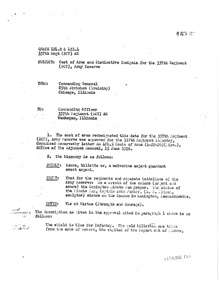
Manufacturing drawings and specifications are sent to a certified manufacturer which provides samples of the finished distinctive unit insignia to the Institute of Heraldry for approval. Once approved the manufacturer may produce this insignia. Each manufacturer has an identifying hallmark assigned by the Institute of Heraldry which is applied to the back of the insignia.
The shield shape design is used to identify color bearing organizations (for example, regiments and battalions). Other design patterns will be used for non-color bearing units. The design is based on war service, assignment or accomplishments. Cartoon characters or logos are not authorized as design elements. Symbols are to represent mission rather than actual equipment as equipment becomes out-of-date. Unit designations, numerals, letters, geographical outlines, reproductions of other insignia will not be included as part of the design.
Once a distinctive unit insignia is approved it is changed only when a heraldic or historical error is found. A modification of unit designation or mission does not permit a change to the DUI design. As a result, DUIs tend to further reflect the historic roots of a unit. For example, many older Military Intelligence battalions' DUIs feature teal blue rather than oriental blue, having been designed for Army Security Agency units which were designated as branch-immaterial. Likewise, those that began as Signals units typically feature orange. The 211th Military Police Battalion provides an example of a unit changing branches without changing insignia, having been assigned to six different branches during its existence. Color-bearing battalions and regiments continue to have insignia without the shield shape if they were formerly non-color-bearing units when the insignia was approved; this includes not only former groups and brigades that were down-sized, but as well flexible battalions (i.e., battalions composed of variable attached numbered companies, rather than fixed-TOE battalions composed of lettered companies which are organic to the battalion) which gained coats of arms and thus colors in the late 1990s, long after their DUIs were already approved.
Authorization
- Paragraph 28-22 of Army Regulation 670-1 authorizes the following types of units to wear a distinctive unit insignia:
- Distinctive unit insignia (DUI) of a design approved by The Institute of Heraldry, U.S. Army, are authorized and prescribed for wear on the service uniforms of personnel in the following echelons.
- Major Command (MACOM): one design for each MACOM.
- Field armies: one design for each field Army.
- Regional readiness commands (RRC).
- Corps: one design for each corps.
- Division: one design for each division.
- Separate brigades: one design for each separate TOE brigade.
- Numbered group: one design for each TOE numbered group.
- Color-bearing regiments; training support battalions aligned to color-bearing regiments; and separate battalions, fixed type: one design for each regiment and separate TOE battalion.
- Battalions, flexible: one design for each TOE battalion.
- Hospitals: one design for each TOE hospital.
- U.S. Army service schools established by the Department of the Army: one design for each service school.
- U.S. Army Training and Doctrine Command training centers: one design for each training center.
- U.S. Army medical centers: one design for each center.
- U.S. Army medical department activities: one design for each activity.
- U.S. Army hospital centers: one design for each center.
- U.S. Army dental activities (DENTAC): one design for each activity.
- Army National Guard Total Army Service Schools (TASS): one design for all TASS activities.
- U.S. Army Reserve schools: one design for all USAR schools.
- Field operating agencies: one design for each activity based on the following criteria.
- An identifiable command structure.
- A valid justification in terms of unit mission, enhancement of unit morale, and degree of unit permanency.
- At least 250 military personnel assigned to the activity.
- Other organizations: one design for each organization, except U.S. Army garrison (active and reserve), meeting the following criteria.
- An identifiable command structure.
- A valid justification in terms of unit mission, enhancement of unit morale, and degree of unit permanency.
- At least 500 military personnel assigned to the organization.
- Other.
- Organizations not in the categories listed above, which have a DUI by virtue of previous HQDA authority, are permitted to retain that DUI if manufactured and worn by members of the subject organization. In each case, such insignia is authorized for wear only after The Institute of Heraldry, U.S. Army, has determined the propriety, and granted approval of the insignia.
- Units not authorized a DUI in their own right will wear the DUI of the command to which assigned. Those units not authorized a DUI in their own right, and not assigned to a higher echelon that is authorized a DUI, may, with the approval of the Army commander concerned, wear the DUI of the Army area in which located. Personnel participating in the AGR and ROTC simultaneous membership programs will wear the DUI of the commands, units, and agencies to which attached.
- Personnel assigned to a joint command, DOD, or Federal agency will wear the DUI designated for joint or DOD agencies.
- Provisional units. The authorization of a DUI will not be granted for provisional units.
Wear
The distinctive unit insignia of the unit to which the soldier is assigned are worn as follows:[2]
- On the beret flash of enlisted personnel
- On the breast patch of the black pullover sweater
- On the shoulder loops of the Army Green Uniform jacket and for enlisted personnel on the Army Service Uniform jacket (when not worn in dress configuration).
- Above the nameplate on the Class A and Class B service uniforms, when the DUI is worn in lieu of a Regimental Distinctive Insignia (RDI). At the Soldier's option the RDI, DUI of their current assignment or the DUI of a previous assignment may be worn above the nameplate. If worn, the RDI for whole branch Regiments (MP, Signal, Quartermaster) must be that of the Soldier's current career field.[3]
By whom worn
When a DUI is authorized, all personnel assigned to the organization wear the insignia, except general officers, the Sergeant Major of the Army and the Senior Enlisted Advisor to the Chairman. General officers wear their Regimental Distinctive Insignia (RDI) on the black pullover sweater. The Sergeant Major of the Army and Senior Enlisted Advisor to the Chairman (if a soldier) wear, respectively, the SMA and SEAC collar insignia in lieu of the DUI on their pullover sweaters, garrison caps and berets, but their epaulets are bare. Reserve component units with WARTRACE alignments may wear the DUI of the Active unit to which they are aligned, in lieu of their peacetime DUI, provided major RSC or state TAG, and MACOM commanders agree on such wear. When personnel transfer to a new organization they wear the DUI of their new unit.
Where worn
The design of the DUI is metal, or metal and enamel, only. U.S. Army personnel wear the insignia on the epaulets of the Army green uniform coat and the chest pad of the black pullover sweater. Enlisted personnel only wear the DUI on the epaulets of the Army Service Uniform and the beret.
How worn
Enlisted personnel wear the DUI on the green service uniform coat and the Army Service Uniform coat, centered on the shoulder loops an equal distance from the outside shoulder seam to the outside edge of the button, with the base of the insignia toward the outside shoulder seam. Enlisted personnel are not authorized to wear the DUI on the enlisted green dress uniform or the Army Dress Blue Uniform (worn with white shirt and necktie/neck tab). Officers wear the DUI centered on the shoulder loops, an equal distance from the inside edge of their grade insignia to the outside edge of the button, with the base of the insignia toward the outside shoulder seam. Officers and Enlisted personnel wear the DUI on the black pad of the Army pullover sweater, centered directly above the nameplate. Officers and Enlisted personnel may wear their applicable RDI on the Army Green Uniform coat, the Army Service Uniform coat, or the black pullover sweater if they are not authorized a DUI. Enlisted personnel wear the DUI centered on the flash of the beret, or their RDI when a DUI is not authorized.
Units not listed in AR 670-1 (other than USAG) may request a DUI be authorized if the unit has at least 500 military assigned (250 for DA operating agencies). The Army element of joint commands may be authorized a DUI if the Army element has at least 500 Army personnel.[4]
Examples
Alphabetical Units
 United States Army Africa
United States Army Africa
"Bringing the Army Team to Africa"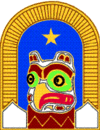 United States Army Alaska
United States Army Alaska
"America's Arctic Warriors"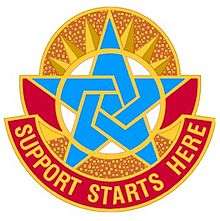 United States Army Combined Arms Support Command
United States Army Combined Arms Support Command
"Support Starts Here" United States Army Cyber Command
United States Army Cyber Command
"Secundum Ad Nimenem"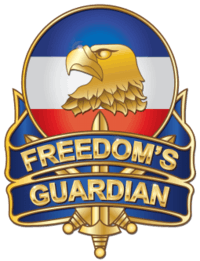 United States Army Forces Command
United States Army Forces Command
"Freedom's Guardian" Fort Dix
Fort Dix
"The Ultimate Weapon"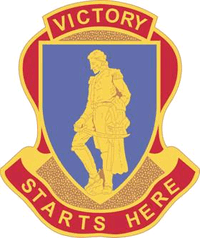 Fort Jackson
Fort Jackson
"Victory Starts Here"
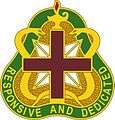 United States Army Medical Command
United States Army Medical Command
"Responsive and Decdicated" United States Army Pacific"One Team"
United States Army Pacific"One Team"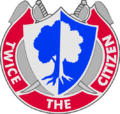 United States Army Reserve Command
United States Army Reserve Command
"Twice the Citizen"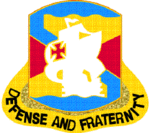 United States Army South
United States Army South
"Defense and Fraternity" United States Army Space and Missile Defense Command
United States Army Space and Missile Defense Command
"Securing the High Ground"
 United States Army Surface Deployment and Distribution Command
United States Army Surface Deployment and Distribution Command
"Serving the Armed Forces"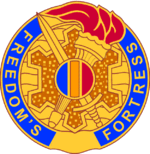 United States Army Training and Doctrine Command
United States Army Training and Doctrine Command
"Freedom's Fortress"
Air Defense Artillery
 31st ADA Brigade
31st ADA Brigade
"Ready and Vigilant"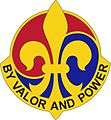 38th ADA Brigade
38th ADA Brigade
"By Valor and Power"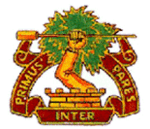

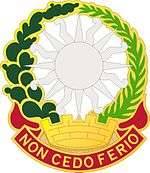
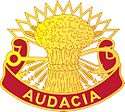


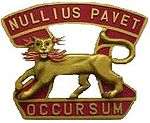

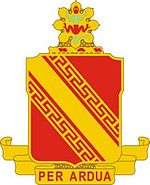
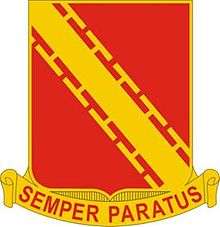

 56th ADA Regiment
56th ADA Regiment
"Night Hides Not"
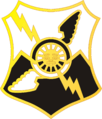

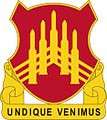
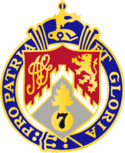

 214th ADA Regiment
214th ADA Regiment
"We Hear and Strike"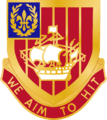 251st ADA Regiment
251st ADA Regiment
"We Aim to Hit" 369th ADA Regiment
369th ADA Regiment
"Don't Tread On Me"
Army
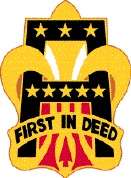 First United States Army
First United States Army
"First In Deed"
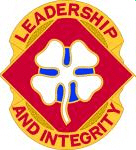 Fourth United States Army
Fourth United States Army
"Leadership And Integrity"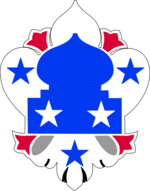 Fifth United States Army
Fifth United States Army
"Strength of the Nation!"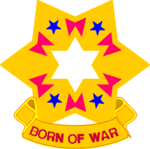 Sixth United States Army
Sixth United States Army
"Born of War"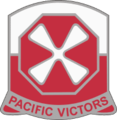 Eighth United States Army
Eighth United States Army
"Pacific Victors"
Armor
 United States Army Armor School
United States Army Armor School
"Forge the Thunderbolt"- 5th Armored Brigade
"Dagger Brigade"  30th Armored Brigade Combat Team
30th Armored Brigade Combat Team
"Old Hickory Brigade" 155th Armored Brigade Combat Team
155th Armored Brigade Combat Team
"Dixie Thunder" 177th Armored Brigade
177th Armored Brigade
"Spearhead to Victory" 194th Armored Brigade
194th Armored Brigade
"Thunderbolts of Battle"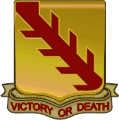 32nd Armor Regiment
32nd Armor Regiment
"Victory or Death".jpg) 33rd Armor Regiment
33rd Armor Regiment
"Men of war"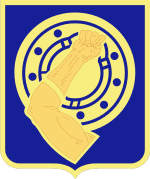 34th Armor Regiment
34th Armor Regiment
"FEAR GOD, DREADNAUGHT"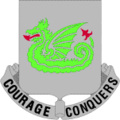 37th Armor Regiment
37th Armor Regiment
"Courage Conquers"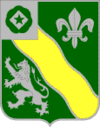 63rd Armor Regiment
63rd Armor Regiment
"Seek, Strike, Destroy"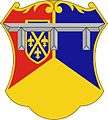
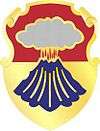

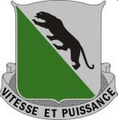
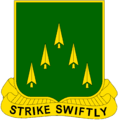 70th Armor Regiment
70th Armor Regiment
"Strike Swiftly" 73rd Armor
73rd Armor
"Honor Fidelity Courage".gif)

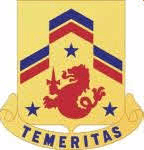 82nd Armor Regiment
82nd Armor Regiment
"Temeritas" 103rd Armor Regiment
103rd Armor Regiment
"Expedite"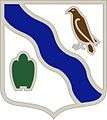 145th Armored Regiment
145th Armored Regiment
"Excel" 149th Armor Regiment
149th Armor Regiment
"Men and Steel"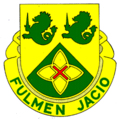
 252nd Armor Regiment
252nd Armor Regiment
"Ready, Poised, Decisive"
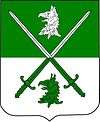
 743rd Tank Battalion
743rd Tank Battalion
"We Keep the Faith" 745th Tank Battalion
745th Tank Battalion
"Our Tracks Lead To Victory" 747th Tank Battalion
747th Tank Battalion 761st Tank Battalion
761st Tank Battalion
"Come Out Fighting"
Aviation
 1st Aviation Brigade
1st Aviation Brigade
"Above the Best" 12th Combat Aviation Brigade
12th Combat Aviation Brigade
"Ad Excelsum Conamur" 16th Combat Aviation Brigade
16th Combat Aviation Brigade
"Born In Battle" 17th Combat Aviation Brigade
17th Combat Aviation Brigade
"Freedom's Eagles"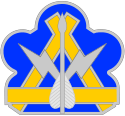 18th Combat Aviation Brigade
18th Combat Aviation Brigade
"Black Barons" 63rd Theater Aviation Brigade
63rd Theater Aviation Brigade
"Unbridled Thunder"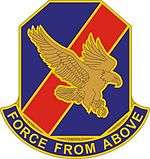 77th Combat Aviation Brigade
77th Combat Aviation Brigade
"Force From Above" 110th Combat Aviation Brigade
110th Combat Aviation Brigade
"Will do"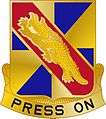 159th Combat Aviation Brigade
159th Combat Aviation Brigade
"Press On"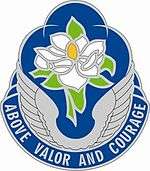 185th Combat Aviation Brigade
185th Combat Aviation Brigade
"Above Valor and Courage" 244th Aviation Brigade
244th Aviation Brigade
"Wings of The Hawk"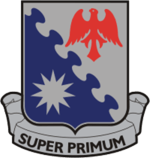



 10th Aviation Regiment
10th Aviation Regiment
"Soldiers Of The Sky" 11th Aviation Regiment
11th Aviation Regiment
"Exempla Proponere"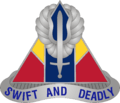 13th Aviation Regiment
13th Aviation Regiment
"Swift and Deadly"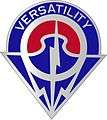 14th Aviation Regiment
14th Aviation Regiment
"Versatility"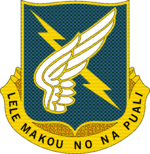
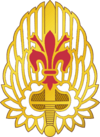
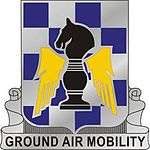 82nd Aviation Regiment
82nd Aviation Regiment
"Ground Air Mobility"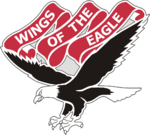 101st Aviation Regiment
101st Aviation Regiment
"Wings of the Eagle"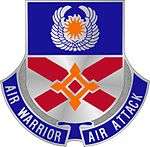 111th Aviation Regiment
111th Aviation Regiment
"Air Warrior Air Attack" 126th Aviation Regiment
126th Aviation Regiment
"Faith Flight Fidelity"- 131st Aviation Regiment
"Where Eagles Dare" 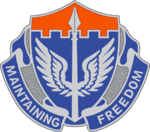 137th Aviation Regiment
137th Aviation Regiment
"Maintaining Freedom" 140th Aviation Regiment
140th Aviation Regiment
"Cura Et Perfectio"
(Accuracy and Perfection)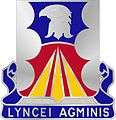 147th Aviation Regiment
147th Aviation Regiment
"Lyncei Agminis"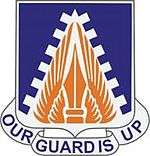 150th Aviation Regiment
150th Aviation Regiment
"Our Guard is Up"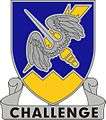 158th Aviation Regiment
158th Aviation Regiment
"Challenge" 159th Aviation Regiment
159th Aviation Regiment
"Press On" 160th Special Operations Aviation Regiment
160th Special Operations Aviation Regiment
"Night Stalkers" 207th Aviation Regiment
207th Aviation Regiment
"Flying to the Future"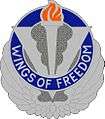 212th Aviation Regiment
212th Aviation Regiment
"Wings of Freedom"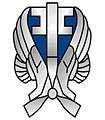 223rd Aviation Regiment
223rd Aviation Regiment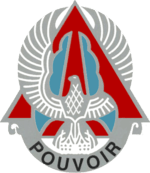
 228th Aviation Regiment
228th Aviation Regiment
"Winged Warriors"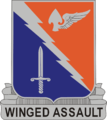 229th Aviation Regiment
229th Aviation Regiment
"Winged Assault" 285th Aviation Regiment
285th Aviation Regiment
"Desert Hawks"
Battlefield Surveillance
 58th Battlefield Surveillance Brigade
58th Battlefield Surveillance Brigade
"Maryland 400"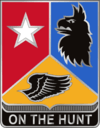 71st Battlefield Surveillance Brigade
71st Battlefield Surveillance Brigade
"On the Hunt" 142nd Battlefield Surveillance Brigade
142nd Battlefield Surveillance Brigade
"Truth through Vigilance" 201st Battlefield Surveillance Brigade
201st Battlefield Surveillance Brigade
"With Courage and Vision" 219th Battlefield Surveillance Brigade
219th Battlefield Surveillance Brigade
"Eye of the Tiger"
Cavalry
 4th Cavalry Brigade
4th Cavalry Brigade
"Train for Combat" 116th Cavalry Brigade Combat Team
116th Cavalry Brigade Combat Team
"Move Strike Destroy"
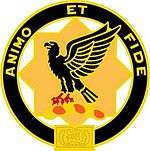
 3rd Cavalry Regiment
3rd Cavalry Regiment
"Brave Rifles"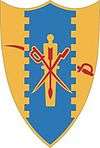
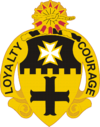 5th Cavalry Regiment
5th Cavalry Regiment
"Loyalty Courage"
 7th Cavalry Regiment
7th Cavalry Regiment
"Garry Owen"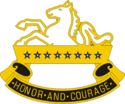 8th Cavalry Regiment
8th Cavalry Regiment
"Honor and Courage" 9th Cavalry Regiment
9th Cavalry Regiment
"We Can, We Will" 10th Cavalry Regiment
10th Cavalry Regiment
"Buffalo Soldiers"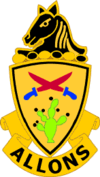 11th Armored Cavalry Regiment
11th Armored Cavalry Regiment
"Black Horse Regiment"
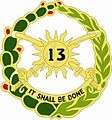 13th Cavalry Regiment
13th Cavalry Regiment
"It Shall Be Done"

 17th Cavalry Regiment
17th Cavalry Regiment
"Forward"
 26th Cavalry Regiment
26th Cavalry Regiment
"Our strength is in loyalty"

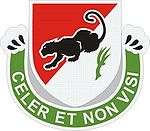 31st Cavalry
31st Cavalry
"Celer et Non Visi"
(Swift and Unseen) 32nd Cavalry
32nd Cavalry
"Victory or Death".jpg) 33rd Cavalry
33rd Cavalry
"Men of War"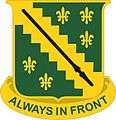 38th Cavalry
38th Cavalry
"Always In Front" 40th Cavalry Regiment
40th Cavalry Regiment
"By Force and Valor" 61st Cavalry
61st Cavalry
"Forging Destiny" 71st Cavalry Regiment
71st Cavalry Regiment
"Gallantly Forward" 73rd Cavalry Regiment
73rd Cavalry Regiment
"Honor Fidelity Courage" 75th Cavalry Regiment
75th Cavalry Regiment
"One Round" 82nd Cavalry Regiment
82nd Cavalry Regiment
"Temeritas"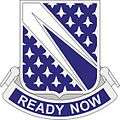 89th Cavalry Regiment
89th Cavalry Regiment
"Ready Now" 91st Cavalry Regiment
91st Cavalry Regiment
"Alert"
 101st Cavalry Regiment
101st Cavalry Regiment
"To the Utmost"
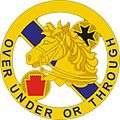 104th Cavalry Regiment
104th Cavalry Regiment
"Over Under or Through"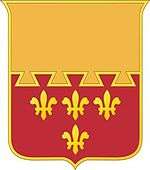

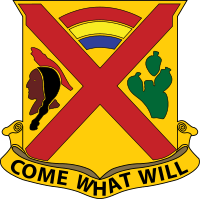 108th Cavalry Regiment
108th Cavalry Regiment
"Come What Will" 110th Cavalry Regiment
110th Cavalry Regiment
"Yankee Eyes" 112th Cavalry Regiment
112th Cavalry Regiment
"Rarin' to Go"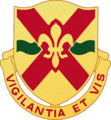

 150th Cavalry Regiment
150th Cavalry Regiment
"We Can Take It" 151st Cavalry Regiment
151st Cavalry Regiment
"Lead the Way" 153rd Cavalry Regiment
153rd Cavalry Regiment
"Scouts Out"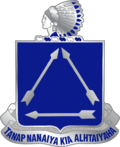
 278th Armored Cavalry Regiment
278th Armored Cavalry Regiment
"I Volunteer Sir"

Chemical
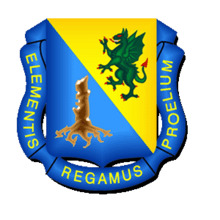
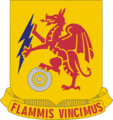

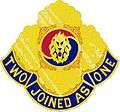 23rd Chemical Battalion
23rd Chemical Battalion
"Two Joined as One"
Civil Affairs
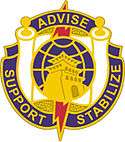 95th Civil Affairs Brigade (Airborne)
95th Civil Affairs Brigade (Airborne)
"Advise, Support, Stabilize" 360th Civil Affairs Brigade
360th Civil Affairs Brigade
"Law Security Order"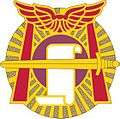 91st Civil Affairs Battalion (Airborne)
91st Civil Affairs Battalion (Airborne) 92nd Civil Affairs Battalion (Airborne)
92nd Civil Affairs Battalion (Airborne) 96th Civil Affairs Battalion (Airborne)
96th Civil Affairs Battalion (Airborne)
"Advise Maintain Create"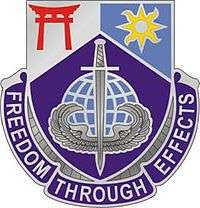 97th Civil Affairs Battalion (Airborne)
97th Civil Affairs Battalion (Airborne)
"Freedom Through Effects" 98th Civil Affairs Battalion (Airborne)
98th Civil Affairs Battalion (Airborne)
"The Bridge Between" 412th Civil Affairs Battalion
412th Civil Affairs Battalion
"Forging Peace"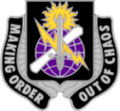 431st Civil Affairs Battalion
431st Civil Affairs Battalion
"Making Order out of Chaos"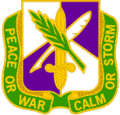 450th Civil Affairs Battalion
450th Civil Affairs Battalion
"Peace or War, Calm or Storm" 489th Civil Affairs Battalion
489th Civil Affairs Battalion
"Vis Amplificans Vim"
Corps
- I Corps
"America's Corps"  III Corps
III Corps
"Phantom" V Corps
V Corps
"It will be done" VII Corps
VII Corps
"Jayhawk"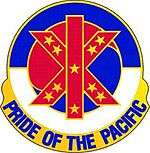 IX Corps
IX Corps
"Pride of the Pacific" XVIII Airborne Corps
XVIII Airborne Corps
"Sky Dragons" XXIV Corps
XXIV Corps
"Honed in Combat"
Divisions
- 1st Infantry Division
"No Mission Too Difficult, No Sacrifice Too Great—Duty First!"  1st Cavalry Division
1st Cavalry Division
"The First Team!"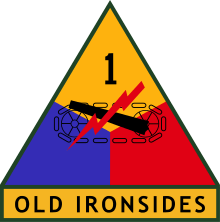 1st Armored Division
1st Armored Division
"Iron Soldiers!"- 2nd Infantry Division
"Second to None" 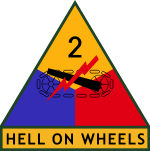 2nd Armored Division
2nd Armored Division
"Hell on Wheels" 3rd Infantry Division
3rd Infantry Division
"Rock of the Marne" 3rd Armored Division
3rd Armored Division
"Spearhead"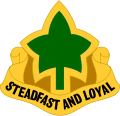 4th Infantry Division
4th Infantry Division
"Steadfast and Loyal"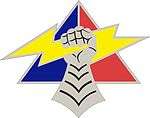 4th Armored Division
4th Armored Division
"Name Enough" 5th Infantry Division
5th Infantry Division
"Red Devils" 6th Infantry Division
6th Infantry Division
"Sight Seein' Sixth" 7th Infantry Division
7th Infantry Division
"Bayonet Division"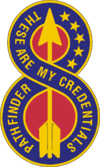 8th Infantry Division
8th Infantry Division
"Pathfinders!" 9th Infantry Division
9th Infantry Division
"Old Reliables"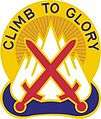 10th Mountain Division
10th Mountain Division
"Climb to Glory" 11th Airborne Division
11th Airborne Division
"Angels"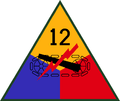 12th Armored Division
12th Armored Division
"Speed is the Password" 23rd Infantry Division
23rd Infantry Division
"Americal" 24th Infantry Division
24th Infantry Division
"Victory Division" 25th Infantry Division
25th Infantry Division
"Tropic Lightning"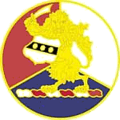 28th Infantry Division
28th Infantry Division
""Keystone" 29th Infantry Division
29th Infantry Division
"Twenty-nine, let's go!"" 34th Infantry Division
34th Infantry Division
"Attack, Attack, Attack!"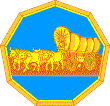 35th Infantry Division
35th Infantry Division
"Sante Fe Division" 36th Infantry Division
36th Infantry Division
"Arrowhead" 38th Infantry Division
38th Infantry Division
"Cyclone" 40th Infantry Division
40th Infantry Division
"Sunshine Division"" 42nd Infantry Division
42nd Infantry Division
"Never Forget"
 82nd Airborne Division
82nd Airborne Division
"All the way!"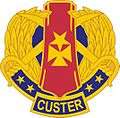 85th Infantry Division
85th Infantry Division
"Custer" 91st Infantry Division
91st Infantry Division
"Wild West Division" 101st Airborne Division
101st Airborne Division
"Rendezvous With Destiny"
Engineer
 16th Engineer Brigade
16th Engineer Brigade
"Blast Build Battle" 18th Engineer Brigade
18th Engineer Brigade
"Essayons et edifions" 20th Engineer Brigade
20th Engineer Brigade
"Building Combat Power"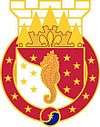
 130th Engineer Brigade
130th Engineer Brigade
"Minutemen For Freedom" 111th Engineer Brigade
111th Engineer Brigade
"Combat Ready"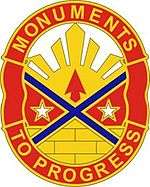 168th Engineer Brigade
168th Engineer Brigade
"Monuments to Progress" 194th Engineer Brigade
194th Engineer Brigade
"Integrity and Initiative" 225th Engineer Brigade
225th Engineer Brigade
"Confectio" 372nd Engineer Brigade
372nd Engineer Brigade
"Engineering Leadership" 411th Engineer Brigade
411th Engineer Brigade
"Plan Build Protect" 420th Engineer Brigade
420th Engineer Brigade
"Success-our Blueprint" 555th Engineer Brigade
555th Engineer Brigade
"Willing and Able" 926th Engineer Brigade
926th Engineer Brigade
"Our Mission Above All"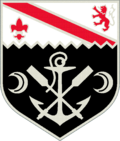
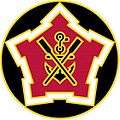

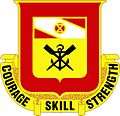 5th Engineer Battalion
5th Engineer Battalion
"Courage Skill Strength" 6th Engineer Battalion
6th Engineer Battalion
"Clairs Chenes N'oubliez Jamais"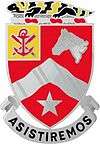
 14th Engineer Battalion
14th Engineer Battalion
"Gong Mu Ro"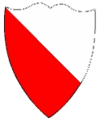
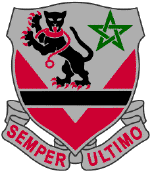
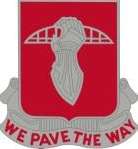 17th Armored Engineer Battalion
17th Armored Engineer Battalion
"We Pave the Way" 31st Engineer Battalion
31st Engineer Battalion
"Demonstramus" 37th Engineer Battalion
37th Engineer Battalion
"Fortuna Infortuna Forti Una" 40th Engineer Battalion
40th Engineer Battalion
"Constructio et Destructio"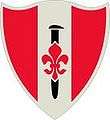 46th Engineer Battalion
46th Engineer Battalion
"Steel Spike" 88th Engineer Battalion
88th Engineer Battalion
"Give Way" 91st Engineer Battalion
91st Engineer Battalion
"Acts Not Words"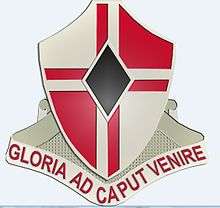
 94th Engineer Battalion
94th Engineer Battalion
"Cohortibus Auxilia"

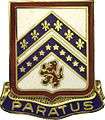
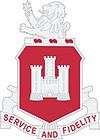 1113th Engineer Battalion
1113th Engineer Battalion
"Service and Fidelity"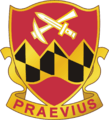
 130th Engineer Battalion
130th Engineer Battalion
"Skill and Strength"
 169th Engineer Battalion
169th Engineer Battalion
"Mind and Hand" 203rd Engineer Battalion
203rd Engineer Battalion
"Don't Kick Our Dog"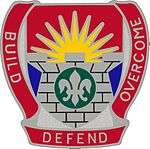 204th Engineer Battalion
204th Engineer Battalion
"Build Defend Overcome"

 397th Engineer Battalion
397th Engineer Battalion
"Essayons Tout De Suite"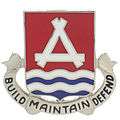 841st Engineer Battalion
841st Engineer Battalion
"Build Maintain Defend"
 878th Engineer Brigade
878th Engineer Brigade
"Building for Freedom"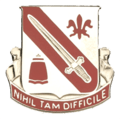 1092nd Engineer Battalion
1092nd Engineer Battalion
"Nihil Tam Dificil"
(Nothing too difficult)
Field Artillery
 56th Field Artillery Command
56th Field Artillery Command
"Quick, Reliable, Accurate" 1st Infantry Division Artillery
1st Infantry Division Artillery
"Drumfire" 1st Cavalry Division Artillery
1st Cavalry Division Artillery
"Red Team" 3rd Infantry Division Artillery
3rd Infantry Division Artillery
"Fulfill your Mission"
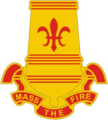 82nd Airborne Division Artillery
82nd Airborne Division Artillery
"Mass the Fire"


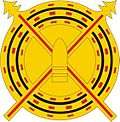
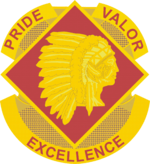 45th Fires Brigade
45th Fires Brigade
"Pride, Valor, Excellence".png) 56th Field Artillery Brigade
56th Field Artillery Brigade
"Quick, Reliable, Accurate" 65th Fires Brigade
65th Fires Brigade
"America's Thunder"

 138th Fires Brigade
138th Fires Brigade
"Ready in Peace and War" 169th Fires Brigade
169th Fires Brigade
"Lenti Sumus" 197th Fires Brigade
197th Fires Brigade
"Live Free or Die"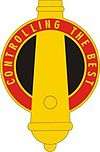

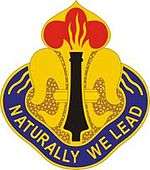 214th Fires Brigade
214th Fires Brigade
"Naturally we lead"

 2nd Field Artillery Regiment
2nd Field Artillery Regiment
"The Second First"
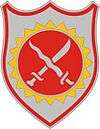
 5th Field Artillery Regiment
5th Field Artillery Regiment
"Faithful and True"
 7th Field Artillery Regiment
7th Field Artillery Regiment
"Nunquam Aerumna Nec Prolio Fractum"
(Never Broken by Hardship or Battle)


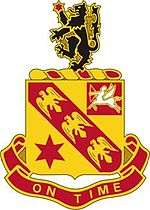 11th Field Artillery Regiment
11th Field Artillery Regiment
"On Time"
 13th Field Artillery Regiment
13th Field Artillery Regiment
"Without Fear, Favor or the Hope of Reward"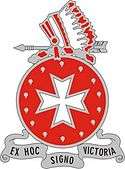


 17th Field Artillery Regiment
17th Field Artillery Regiment
"In Time of Peace Prepare For War"

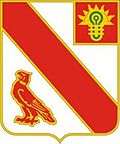

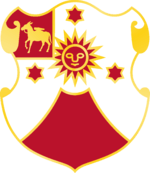

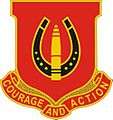 26th Field Artillery Regiment
26th Field Artillery Regiment
"Courage and Action"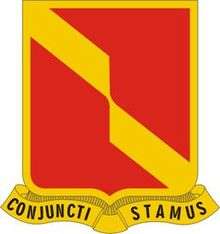
 28th Field Artillery Regiment
28th Field Artillery Regiment
"We Support the Line" 30th Field Artillery Regiment
30th Field Artillery Regiment
"Striving To The Highest"
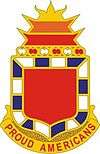 32nd Field Artillery Regiment
32nd Field Artillery Regiment
"Proud Americans"
 34th Field Artillery Regiment
34th Field Artillery Regiment
"We Support"
 36th Field Artillery Regiment
36th Field Artillery Regiment
"In Order"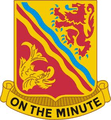 37th Field Artillery Regiment
37th Field Artillery Regiment
"On the Minute" 38th Field Artillery Regiment
38th Field Artillery Regiment
"Steel Behind the Rock"
 40th Field Artillery Regiment
40th Field Artillery Regiment
"All for One" 41st Field Artillery Regiment
41st Field Artillery Regiment
"Mission Accomplished"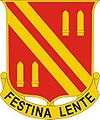
 73rd Field Artillery Regiment
73rd Field Artillery Regiment
"Speed and Power Always"
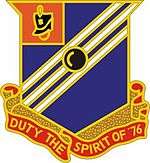 76th Field Artillery Regiment
76th Field Artillery Regiment
"Duty The Spirit of 76"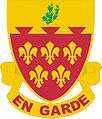

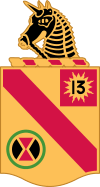 79th Field Artillery Regiment
79th Field Artillery Regiment
""Our Country – Our Regiment"".svg.png) 81st Field Artillery Regiment
81st Field Artillery Regiment
"Libertas Justitia Humanitas"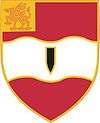 82nd Field Artillery Regiment
82nd Field Artillery Regiment
"Can and Will".svg.png) 84th Field Artillery Regiment
84th Field Artillery Regiment
"Performance Above All"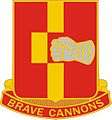 92nd Field Artillery Regiment
92nd Field Artillery Regiment
"Brave Cannons" 101st Field Artillery Regiment
101st Field Artillery Regiment
"Vincere et Vivere" 103rd Field Artillery Regiment
103rd Field Artillery Regiment
"Play the game"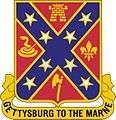 107th Field Artillery Regiment
107th Field Artillery Regiment
"Gettysburg to the Marne"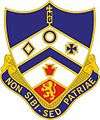

 113th Field Artillery Regiment
113th Field Artillery Regiment 119th Field Artillery Regiment
119th Field Artillery Regiment
"Viam Praeparamus" 123rd Field Artillery Regiment
123rd Field Artillery Regiment
"Parati et Volentes" 141st Field Artillery Regiment
141st Field Artillery Regiment
"Try Us"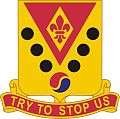 142nd Field Artillery Regiment
142nd Field Artillery Regiment
"Try To Stop Us"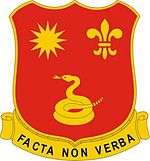
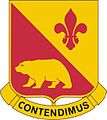 144th Field Artillery Regiment
144th Field Artillery Regiment
"Contendimus"
(We Strive) 145th Field Artillery Regiment
145th Field Artillery Regiment
"Pro Deo"
(For God and Country) 157th Field Artillery Regiment
157th Field Artillery Regiment
"Eager for Duty" 178th Field Artillery Regiment
178th Field Artillery Regiment
"Tried and True" 182nd Field Artillery Regiment
182nd Field Artillery Regiment
"Might if Right" 197th Field Artillery Regiment
197th Field Artillery Regiment
"A Bas L'avion" 201st Field Artillery Regiment
201st Field Artillery Regiment
"Yes Sir" 214th Field Artillery Regiment
214th Field Artillery Regiment
"We hear and strike" 222nd Field Artillery Regiment
222nd Field Artillery Regiment 319th Field Artillery Regiment
319th Field Artillery Regiment
"Loyalty"

 333rd Field Artillery Regiment
333rd Field Artillery Regiment
"Three Rounds"
 5th United States Army Artillery Group
5th United States Army Artillery Group
"First to Battle" 512th United States Army Artillery Group
512th United States Army Artillery Group
"Valor Above All"
 376th Parachute Field Artillery Battalion
376th Parachute Field Artillery Battalion
"Look Out Below" 674th Airborne Field Artillery Battalion
674th Airborne Field Artillery Battalion
"Thunder From Above" 907th Glider Field Artillery Battalion
907th Glider Field Artillery Battalion
"We Will We Can"
Infantry



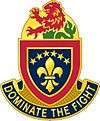 79th Infantry Brigade
79th Infantry Brigade
"Dominate the Fight" 120th Infantry Brigade
120th Infantry Brigade
"Our Outfits in the Fight" 157th Infantry Brigade
157th Infantry Brigade
"Vigilance and Valor" 158th Infantry Brigade
158th Infantry Brigade
"One Standard"
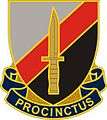
 189th Infantry Brigade
189th Infantry Brigade
"Swift and Lethal" 191st Infantry Brigade
191st Infantry Brigade
"Vigilante Sails" 193rd Infantry Brigade
193rd Infantry Brigade
"No Ground to Give" 199th Infantry Brigade
199th Infantry Brigade
"Light Swift Accurate"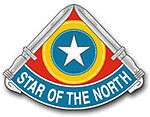 205th Infantry Brigade
205th Infantry Brigade
"Star of the North"



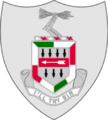 5th Infantry Regiment
5th Infantry Regiment
"I'll Try, Sir"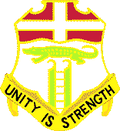 6th Infantry Regiment
6th Infantry Regiment
"Unity is Strength"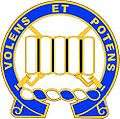

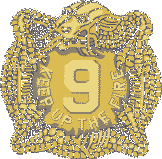 9th Infantry Regiment
9th Infantry Regiment
"Keep Up The Fire!"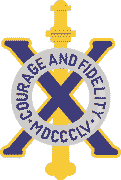 10th Infantry Regiment
10th Infantry Regiment
"Courage and Fidelity"

 13th Infantry Regiment
13th Infantry Regiment
"Forty Rounds"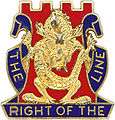 14th Infantry Regiment
14th Infantry Regiment
"The Right of the Line"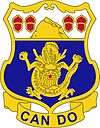 15th Infantry Regiment
15th Infantry Regiment
"Can Do"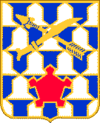
 17th Infantry Regiment
17th Infantry Regiment
"Truth and Courage"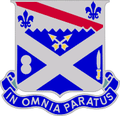
 19th Infantry Regiment
19th Infantry Regiment
"Rock Steady, Rock Force"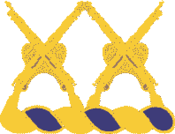
 21st Infantry Regiment
21st Infantry Regiment
"Gimlet"- 22nd Infantry Regiment
"Deeds, Not Words" 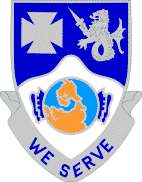 23rd Infantry Regiment
23rd Infantry Regiment
"We Serve"
 25th Infantry Regiment
25th Infantry Regiment
"Onward"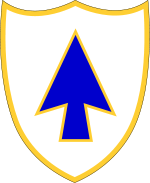 26th Infantry Regiment
26th Infantry Regiment
"Blue Spaders"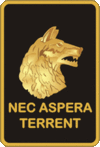

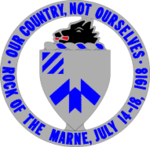 30th Infantry Regiment
30th Infantry Regiment
"Our Country Not Ourselves"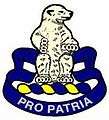



 35th Infantry Regiment
35th Infantry Regiment
"Cacti"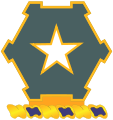 36th Infantry Regiment
36th Infantry Regiment
"Deeds Not Words" 37th Infantry Regiment
37th Infantry Regiment
"For Freedom"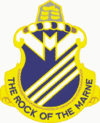 38th Infantry Regiment
38th Infantry Regiment
"Rock of the Marne"
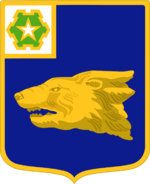
 41st Infantry Regiment
41st Infantry Regiment
" Straight and Stalwart"
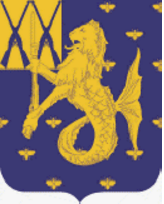

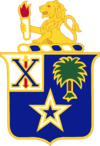 45th Infantry Regiment
45th Infantry Regiment
"Strong To Endure" 46th Infantry Regiment
46th Infantry Regiment
"Victory’s Point"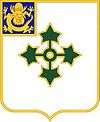
 48th Infantry Regiment
48th Infantry Regiment
"Dragoons" 50th Infantry Regiment
50th Infantry Regiment
"Play the Game" 51st Infantry Regiment
51st Infantry Regiment
"I Serve"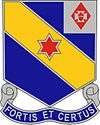

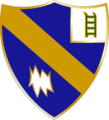 54th Infantry Regiment
54th Infantry Regiment
"I will cast my shoe over it" 56th Infantry Regiment
56th Infantry Regiment
"Honor, Loyalty"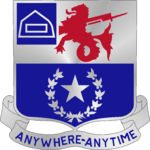 57th Infantry Regiment
57th Infantry Regiment
"Anywhere, Anytime" 58th Infantry Regiment
58th Infantry Regiment
"Love of Country"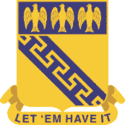 59th Infantry Regiment
59th Infantry Regiment
"Let 'em Have It" 60th Infantry Regiment
60th Infantry Regiment
"To the Utmost Extent of Our Power" 61st Infantry Regiment
61st Infantry Regiment
"The Best lead the Rest"
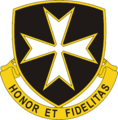 65th Infantry Regiment
65th Infantry Regiment
"Honor and Fidelity"



 69th Infantry Regiment
69th Infantry Regiment
"Gentle When Stroked; Fierce when Provoked"

 85th Infantry Regiment
85th Infantry Regiment
"Fix Bayonets"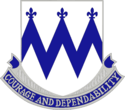 86th Infantry Regiment
86th Infantry Regiment
"Courage and Dependability"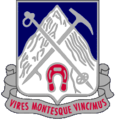
 88th Infantry Regiment
88th Infantry Regiment
"Ride the Storm"
 102nd Infantry Regiment
102nd Infantry Regiment
"Stand Forth" 103rd Infantry Regiment
103rd Infantry Regiment
"To the Last Man"


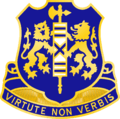

 110th Infantry Regiment
110th Infantry Regiment
"Cuiusque Devotio est Vis Regimenti"
(The Devotion of Each is the Strength of the Regiment)
 112th Infantry Regiment
112th Infantry Regiment
"Strive, Obey, Endure"

- 115th Infantry Regiment
"Rally Round the Flag"  116th Infantry Regiment
116th Infantry Regiment
"Ever Forward"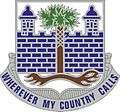 118th Infantry Regiment
118th Infantry Regiment
"Wherever My Country Calls" 119th Infantry Regiment
119th Infantry Regiment
"Undaunted"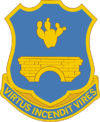

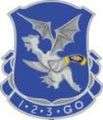 123rd Infantry Regiment
123rd Infantry Regiment
"1, 2, 3, Go" 124th Infantry Regiment
124th Infantry Regiment
"Florida and Country"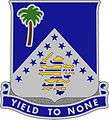 125th Infantry Regiment
125th Infantry Regiment
"Yield to None" 127th Infantry Regiment
127th Infantry Regiment
"Les Terribles" (The Terrible) 128th Infantry Regiment
128th Infantry Regiment
"Les Terribles" (The Terrible)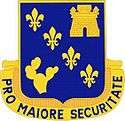
 130th Infantry Regiment
130th Infantry Regiment
"Always Ready"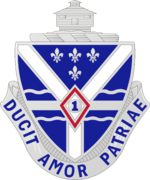

 133rd Infantry Regiment
133rd Infantry Regiment
"Avauncez" (Advance)
 135th Infantry Regiment
135th Infantry Regiment
"To the Last Man" 136th Infantry Regiment
136th Infantry Regiment
"Rex Montis" (King of the Hill) 137th Infantry Regiment
137th Infantry Regiment
"Valor for Service" 138th Infantry Regiment
138th Infantry Regiment
"St. Louis' Own" 139th Infantry Regiment
139th Infantry Regiment
"First, Furthest, Last"
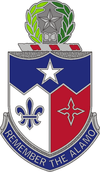 141st Infantry Regiment
141st Infantry Regiment
"Remember the Alamo" 142nd Infantry Regiment
142nd Infantry Regiment
"I'll Face You" 143rd Infantry Regiment
143rd Infantry Regiment
"Arms Secure Peace"

 148th Infantry Regiment
148th Infantry Regiment
"We'll Do It"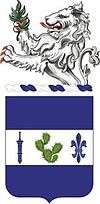 151th Infantry Regiment
151th Infantry Regiment
"Wide Awake Wide Awake" 153th Infantry Regiment
153th Infantry Regiment
"Let's Go" 155th Infantry Regiment
155th Infantry Regiment
"Stand Fast" 156th Infantry Regiment
156th Infantry Regiment
"Dieu Et Moi"
(God and Me) 157th Infantry Regiment
157th Infantry Regiment
"Rifles Up"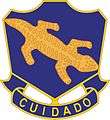 158th Infantry Regiment
158th Infantry Regiment
"Cuidado" 159th Infantry Regiment
159th Infantry Regiment
"Unity for Service"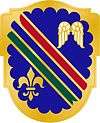

 162nd Infantry Regiment
162nd Infantry Regiment
"First to Assemble" 163rd Infantry Regiment
163rd Infantry Regiment
"Men, Do Your Duty"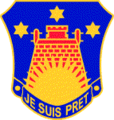
 165th Infantry Regiment
165th Infantry Regiment
"Gentle When Stroked; Fierce when Provoked") 168th Infantry Regiment
168th Infantry Regiment
"On Guard" 172nd Infantry Regiment
172nd Infantry Regiment
"Ascend to Victory"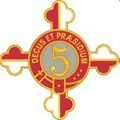


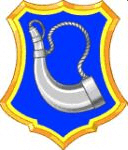 181st Infantry Regiment
181st Infantry Regiment
"Keep Your Powder Dry"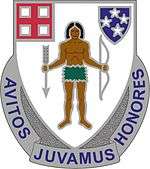
 184th Infantry
184th Infantry
"Let's Go!"
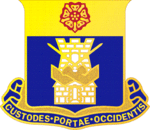



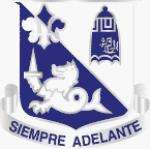

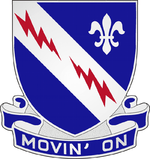 279th Infantry
279th Infantry
"Movin' On"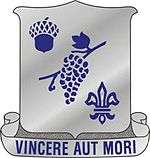
 291st Infantry
291st Infantry
"Altaha Abilia"
(Always Ready)
 304th Infantry Regiment
304th Infantry Regiment
"Forward" 307th Infantry
307th Infantry
"Clear the Way" 310th Infantry
310th Infantry
"Allons Mes Enfants"
(Forward My Children)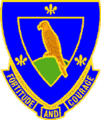 314th Infantry
314th Infantry
"Fortitude and Courage" 315th Infantry
315th Infantry
"Qui me tangit paenitebit"
(He who touches me will repent) 325th Infantry Regiment
325th Infantry Regiment
"Lets Go"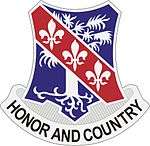 327th Infantry Regiment
327th Infantry Regiment
"Honor and Country
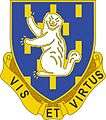
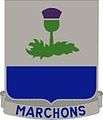 338th Infantry
338th Infantry
"Marchons"
(March On)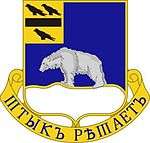
 340th Infantry
340th Infantry
"Forward" 351st Infantry
351st Infantry
"Toujours Prêt"
(Always Ready)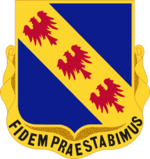
 356th Infantry
356th Infantry
"Boutez en Avant"
(Push Forward) 361st Infantry
361st Infantry
"Ducit Amor Patriae"
(Led by Love of Country) 362nd Infantry
362nd Infantry
"Arma Tuentur Pacem"
(Arms maintain peace) 369th Infantry Regiment
369th Infantry Regiment
"Harlem Hellfighters"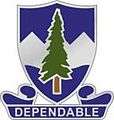 383rd Infantry
383rd Infantry
"Dependable" 411th Infantry
411th Infantry
"Paratus Ferire"
(Ready to Strike)
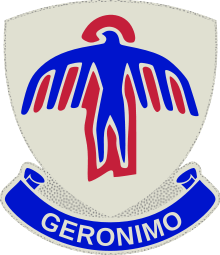 501st Parachute Infantry Regiment
501st Parachute Infantry Regiment
"Geronimo"- 502nd Infantry Regiment
"Strike" 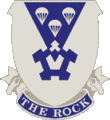 503rd Parachute Infantry Regiment
503rd Parachute Infantry Regiment
"The Rock"- 504th Parachute Infantry Regiment
"Strike Hold" 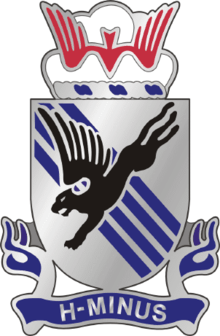 505th Parachute Infantry Regiment
505th Parachute Infantry Regiment
"H-Minus".svg.png) 506th Infantry Regiment
506th Infantry Regiment
"Currahee" 509th Parachute Infantry Regiment
509th Parachute Infantry Regiment
"All the Way"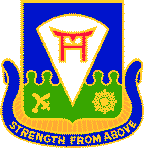 511th Parachute Infantry Regiment
511th Parachute Infantry Regiment
"Strength from Above"
Maneuver Enhancement
 1st Maneuver Enhancement Brigade
1st Maneuver Enhancement Brigade
"Guardian Brigade"
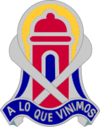
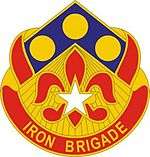 157th Maneuver Enhancement Brigade
157th Maneuver Enhancement Brigade
"Iron Brigade"
Medical and Veterinary
 Army Medical Department Regimental DUI
Army Medical Department Regimental DUI
"Experientia et Progressus" 176th Medical Brigade
176th Medical Brigade
"To Serve Proudly" 3rd Medical Command
3rd Medical Command
"Front Line Surgeons"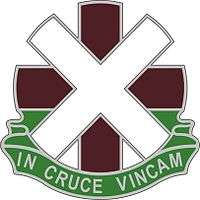
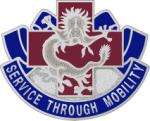 28th Combat Support Hospital
28th Combat Support Hospital
"Service Through Mobility"
 343rd Evacuation Hospital
343rd Evacuation Hospital
"Best of the Best" 807th Medical Command
807th Medical Command
"Dedicated to Health"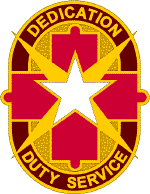 Brooke Army Medical Center
Brooke Army Medical Center
"Dedication Duty Service" Carl R. Darnall Army Medical Center
Carl R. Darnall Army Medical Center
"Care and Concern".jpg) Dwight D. Eisenhower Army Medical Center
Dwight D. Eisenhower Army Medical Center
"Dignity Dedication Honor"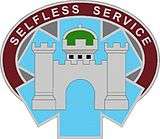 Landstuhl Regional Medical Center
Landstuhl Regional Medical Center
"Selfless Service"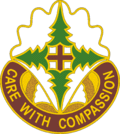 Madigan Army Medical Center
Madigan Army Medical Center
"Care With Compassion"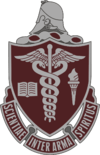 Walter Reed National Military Medical Center, U.S. Army Element[6]
Walter Reed National Military Medical Center, U.S. Army Element[6]
"Scientia Inter Arma Spiritus"
(In the Spirit of Science and Arms)
 William Beaumont Army Medical Center
William Beaumont Army Medical Center
"First to Care"
Military Intelligence
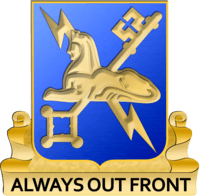 Military Intelligence Regimental DUI
Military Intelligence Regimental DUI
"Always out Front" 66th Military Intelligence Brigade
66th Military Intelligence Brigade
"Honor Valor and Security" 205th Military Intelligence Brigade
205th Military Intelligence Brigade
"Vanguard of Vigilance"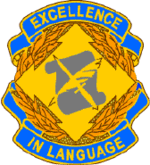 300th Military Intelligence Brigade
300th Military Intelligence Brigade
"Excellence in Language"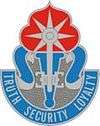 470th Military Intelligence Brigade
470th Military Intelligence Brigade
"Truth Security Loyalty" 500th Military Intelligence Brigade
500th Military Intelligence Brigade
"Scientia Potentia Est"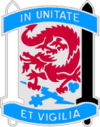 501st Military Intelligence Brigade
501st Military Intelligence Brigade
"Red Dragons" 513th Military Intelligence Brigade
513th Military Intelligence Brigade
"Per Vigilantiam Scientia" 704th Military Intelligence Brigade
704th Military Intelligence Brigade
"Here and Everywhere"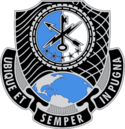 780th Military Intelligence Brigade
780th Military Intelligence Brigade
"Ubique et Semper in Pugna"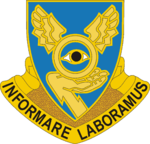 1st Military Intelligence Battalion
1st Military Intelligence Battalion
"Informare Laboramus"
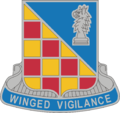 3rd Military Intelligence Battalion
3rd Military Intelligence Battalion
"Winged Vigilance" 15th Military Intelligence Battalion
15th Military Intelligence Battalion
"Vigilantia Ad Finem"
(Vigilant to the End) 24th Military Intelligence Battalion
24th Military Intelligence Battalion
"Our Eyes Support" 109th Military Intelligence Battalion
109th Military Intelligence Battalion
"The Disruptors" 141st Military Intelligence Battalion
141st Military Intelligence Battalion
"Strength through Knowledge" 142nd Military Intelligence Battalion
142nd Military Intelligence Battalion
"Into all the World" 163rd Military Intelligence Battalion
163rd Military Intelligence Battalion
"Knowledge is Power" 201st Military Intelligence Battalion
201st Military Intelligence Battalion
"Accurate Fast All Source" 204th Military Intelligence Battalion
204th Military Intelligence Battalion
"Silently We Defend" 205th Military Intelligence Battalion
205th Military Intelligence Battalion
"Pacific Vigilance"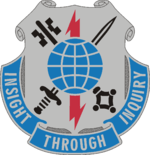 223rd Military Intelligence Battalion
223rd Military Intelligence Battalion
"Insight through Inquiry" 250th Military Intelligence Battalion
250th Military Intelligence Battalion
"Knowledge Power Freedom" 260th Military Intelligence Battalion
260th Military Intelligence Battalion
"Intelligentia Et Veritas" 301st Military Intelligence Battalion
301st Military Intelligence Battalion
"The Force Multiplier"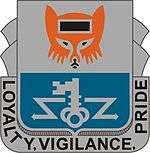
 303rd Military Intelligence Battalion
303rd Military Intelligence Battalion
"Primi Noscere" 308th Military Intelligence Battalion
308th Military Intelligence Battalion
"Guardians of America" 310th Military Intelligence Battalion
310th Military Intelligence Battalion
"Arrectis Auribus" 323rd Military Intelligence Battalion
323rd Military Intelligence Battalion
"Collect Exploit"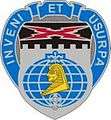 338th Military Intelligence Battalion
338th Military Intelligence Battalion
"Inveni Et Usurpa" 341st Military Intelligence Battalion
341st Military Intelligence Battalion
"Vigilantia Et Valor" 368th Military Intelligence Battalion
368th Military Intelligence Battalion
"Vanguard of the Pacific"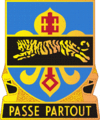 415th Military Intelligence Battalion
415th Military Intelligence Battalion
"Passe Partout"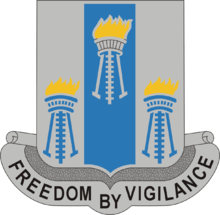 502nd Military Intelligence Battalion
502nd Military Intelligence Battalion
"Freedom by Vigilance"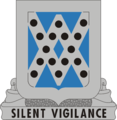 524th Military Intelligence Battalion
524th Military Intelligence Battalion
"Silent Vigilance" 532nd Military Intelligence Battalion
532nd Military Intelligence Battalion
"Nosce Hostem" 636th Military Intelligence Battalion
636th Military Intelligence Battalion
"Lone Star Vigilance" 709th Military Intelligence Battalio]
709th Military Intelligence Battalio]
"Fortis Et Vigilio" 719th Military Intelligence Battalion
719th Military Intelligence Battalion
"Strive for Excellence" 741st Military Intelligence Battalion
741st Military Intelligence Battalion
"Primoris Scio"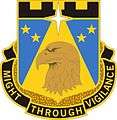 742nd Military Intelligence Battalion
742nd Military Intelligence Battalion
"Might Through Vigilance"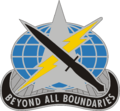 743rd Military Intelligence Battalion
743rd Military Intelligence Battalion
"Beyond all boundaries"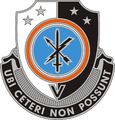 781st Military Intelligence Battalion
781st Military Intelligence Battalion
"Ubi Cetori Non Possunt"
Military Police
 Army Corrections Command
Army Corrections Command
"Vanguards of Justice"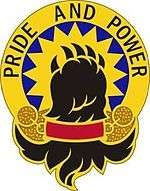 49th Military Police Brigade
49th Military Police Brigade
"Pride and Power" 92nd Military Police Battalion
92nd Military Police Battalion
"Hold the Gate" 95th Military Police Battalion
95th Military Police Battalion
"Superstars" 97th Military Police Battalion
97th Military Police Battalion
"Take Charge"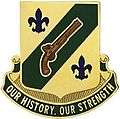 117th Military Police Battalion
117th Military Police Battalion
"Our History, Our Strength" 168th Military Police Battalion
168th Military Police Battalion
"Serving Those Who Serve"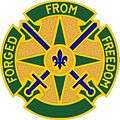 185th Military Police Battalion
185th Military Police Battalion
"Forged from Freedom" 192nd Military Police Battalion
192nd Military Police Battalion
"Skill and Force"
 519th Military Police Battalion
519th Military Police Battalion
"Service to the Troops" 728th Military Police Battalion
728th Military Police Battalion
"In Peace as in War"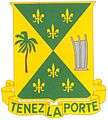
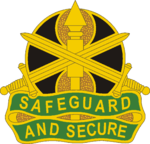 785th Military Police Battalion
785th Military Police Battalion
"Safeguard and Secure"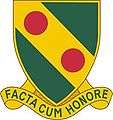
Ordnance
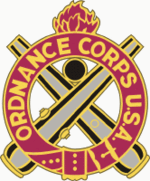
 59th Ordnance Brigade
59th Ordnance Brigade
"Power to Spare" 71st Ordnance Group (EOD)
71st Ordnance Group (EOD)
"With Distinction and Valor" 3rd Ordnance Battalion
3rd Ordnance Battalion
"Service, Not Glory" 63rd Ordnance Battalion(EOD)
63rd Ordnance Battalion(EOD)
"Semper Ibi" 83rd Ordnance Battalion
83rd Ordnance Battalion
"Supporting the Best" 184th Ordnance Battalion (EOD)
184th Ordnance Battalion (EOD)
"Without Equal" 192nd Ordnance Battalion (EOD)
192nd Ordnance Battalion (EOD)
"The Reliable One"
Quartermaster
 Quartermaster Regimental DUI
Quartermaster Regimental DUI
"Supporting Victory"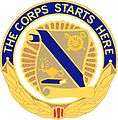 23rd Quartermaster Brigade
23rd Quartermaster Brigade
"The Corps Starts Here"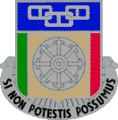 244th Quartermaster Battalion
244th Quartermaster Battalion
"Si Non Potestis Possumus" 262nd Quartermaster Battalion
262nd Quartermaster Battalion
"Lifeline to Victory"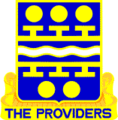 266th Quartermaster Battalion
266th Quartermaster Battalion
"The Providers"
Regional Support Group
 10th Regional Support Group
10th Regional Support Group
"Service through Support" 644th Regional Support Group
644th Regional Support Group
"Northern Star"
Signal
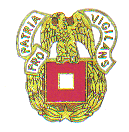
 1st Signal Brigade
1st Signal Brigade
"First to Communicate" 2nd Signal Brigade
2nd Signal Brigade
"Excellence" 3rd Signal Brigade
3rd Signal Brigade
"Triple Threat" 7th Signal Brigade
7th Signal Brigade
"Voice of Freedom"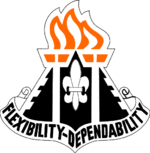 11th Signal Brigade
11th Signal Brigade
"Flexibility, Dependability" 15th Signal Brigade
15th Signal Brigade
"Fideliter Servimus"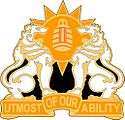 35th Signal Brigade
35th Signal Brigade
"Utmost of our Ability" 93rd Signal Brigade
93rd Signal Brigade
"Loyalty, Harmony, Accuracy" 160th Signal Brigade
160th Signal Brigade
"Finest Of The First"
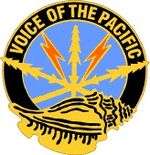 516th Signal Brigade
516th Signal Brigade
"Voice of the Pacific"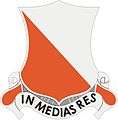 1st Signal Battalion
1st Signal Battalion
"In media res" 11th Signal Battalion
11th Signal Battalion
"Sure and Ready"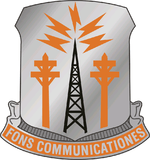
 25th Signal Battalion
25th Signal Battalion
"Never Unprepared"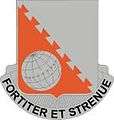 30th Signal Battalion
30th Signal Battalion
"Fortiter et Strenue"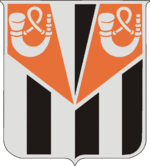
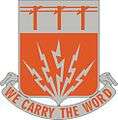 35th Signal Battalion
35th Signal Battalion
"We Carry the Word" 38th Signal Battalion
38th Signal Battalion
"Signal Ready" 39th Signal Battalion
39th Signal Battalion
"The Will to Succeed" 52nd Signal Battalion
52nd Signal Battalion
"We Transmit"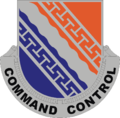 54th Signal Battalion
54th Signal Battalion
"Command Control"
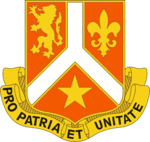
 102nd Signal Battalion
102nd Signal Battalion
"Honor, Heritage, History"
 115th Signal Battalion
115th Signal Battalion
"First in Duty"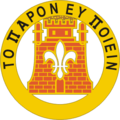

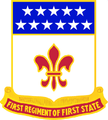 198th Signal Battalion
198th Signal Battalion
"First Regiment of First State" 327th Signal Battalion
327th Signal Battalion
"Speed and Accuracy"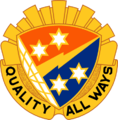 369th Signal Battalion
369th Signal Battalion
"Quality All Ways"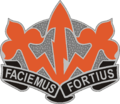 509th Signal Battalion
509th Signal Battalion
"Faciemus Fortius"
Special Troops Battalions
 Special Troops Battalion, 1st Cavalry Division
Special Troops Battalion, 1st Cavalry Division
"Live the Legend" Special Troops Battalion, 1st Armored Division
Special Troops Battalion, 1st Armored Division
"Make it Matter" Special Troops Battalion, 2nd Infantry Division
Special Troops Battalion, 2nd Infantry Division
"Rock Solid, Strike Hard" Special Troops Battalion, 3rd Infantry Division
Special Troops Battalion, 3rd Infantry Division
"Fortius Quo Unitatis"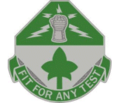 Special Troops Battalion, 4th Infantry Division
Special Troops Battalion, 4th Infantry Division
"Fir for Any Test"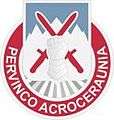 Special Troops Battalion, 10th Mountain Division
Special Troops Battalion, 10th Mountain Division
"Pervinco Acroceraunia" Special Troops Battalion, 25th Infantry Division
Special Troops Battalion, 25th Infantry Division
"Strike with Honor" Special Troops Battalion, 28th Infantry Division
Special Troops Battalion, 28th Infantry Division
"Iron Support" Special Troops Battalion, 29th Infantry Division
Special Troops Battalion, 29th Infantry Division
"Support and Protect" Special Troops Battalion, 34th Infantry Division
Special Troops Battalion, 34th Infantry Division
"Support the Attack"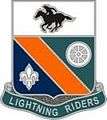 Special Troops Battalion, 35th Infantry Division
Special Troops Battalion, 35th Infantry Division
"Lightning Riders" Special Troops Battalion, 36th Infantry Division
Special Troops Battalion, 36th Infantry Division
"Support through Service"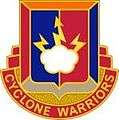 Special Troops Battalion, 38th Infantry Division
Special Troops Battalion, 38th Infantry Division
"Cyclone Warriors" Special Troops Battalion, 40th Infantry Division
Special Troops Battalion, 40th Infantry Division
"Sostanga el Combate" Special Troops Battalion, 42nd Infantry Division
Special Troops Battalion, 42nd Infantry Division
"Never Forget" Special Troops Battalion, 82nd Airborne Division
Special Troops Battalion, 82nd Airborne Division
"Courage Commitment" Special Troops Battalion, 1st Brigade Combat Team, 1st Infantry Division
Special Troops Battalion, 1st Brigade Combat Team, 1st Infantry Division
"Victory through Versatility"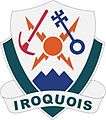
 Special Troops Battalion, 1st Brigade Combat Team, 82nd Airborne Division
Special Troops Battalion, 1st Brigade Combat Team, 82nd Airborne Division
"Strength, Honor, Diversity" Special Troops Battalion, 1st Brigade Combat Team, 101st Airborne Division
Special Troops Battalion, 1st Brigade Combat Team, 101st Airborne Division
"Strength in Honor"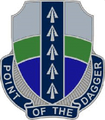 Special Troops Battalion, 2nd Brigade Combat Team, 1st Infantry Division
Special Troops Battalion, 2nd Brigade Combat Team, 1st Infantry Division
"Point of the Dagger" Special Troops Battalion, 2nd Brigade Combat Team, 1st Cavalry Division
Special Troops Battalion, 2nd Brigade Combat Team, 1st Cavalry Division
"Perstatum Fortitudo Bellatoris" Special Troops Battalion, 2nd Brigade Combat Team, 10th Mountain Division
Special Troops Battalion, 2nd Brigade Combat Team, 10th Mountain Division
"Vigor et Dignitas" Special Troops Battalion, 2nd Brigade Combat Team, 82nd Airborne Division
Special Troops Battalion, 2nd Brigade Combat Team, 82nd Airborne Division
"From skies of blue" Special Troops Battalion, 2nd Brigade Combat Team, 101st Airborne Division
Special Troops Battalion, 2nd Brigade Combat Team, 101st Airborne Division
"One Strike One Team"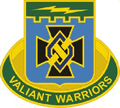 Special Troops Battalion, 3rd Brigade Combat Team, 1st Infantry Division
Special Troops Battalion, 3rd Brigade Combat Team, 1st Infantry Division
"Valiant Warriors"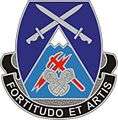 Special Troops Battalion, 3rd Brigade Combat Team, 10th Mountain Division
Special Troops Battalion, 3rd Brigade Combat Team, 10th Mountain Division
"Fortitudo et Artis" Special Troops Battalion, 3rd Brigade Combat Team, 82nd Airborne Division
Special Troops Battalion, 3rd Brigade Combat Team, 82nd Airborne Division
"Firmus Vigilo Validus" Special Troops Battalion, 3rd Brigade Combat Team, 101st Airborne Division
Special Troops Battalion, 3rd Brigade Combat Team, 101st Airborne Division
"Belong to the Warrior" Special Troops Battalion, 4th Brigade Combat Team, 1st Infantry Division
Special Troops Battalion, 4th Brigade Combat Team, 1st Infantry Division
"Trained and Ready" Special Troops Battalion, 4th Brigade Combat Team, 82nd Airborne Division
Special Troops Battalion, 4th Brigade Combat Team, 82nd Airborne Division
"Swift Agile and Lethal" Special Troops Battalion, 4th Brigade Combat Team, 101st Airborne Division
Special Troops Battalion, 4th Brigade Combat Team, 101st Airborne Division
"Pergite Proelium" Special Troops Battalion, 173rd Airborne Brigade Combat Team
Special Troops Battalion, 173rd Airborne Brigade Combat Team
"Audentia et Fortitudo (Courage and Strength)"
Support
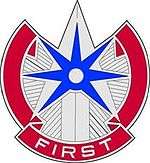
 377th Theater Sustainment Command
377th Theater Sustainment Command
"Can Do Anytime Anywhere"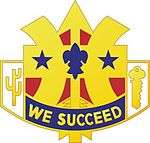 103rd Sustainment Command (Expeditionary)
103rd Sustainment Command (Expeditionary)
"We Succeed" 143rd Sustainment Command (Expeditionary)
143rd Sustainment Command (Expeditionary)
"Movement Brings Victory"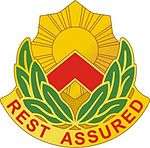 593rd Expeditionary Sustainment Command
593rd Expeditionary Sustainment Command
"Rest Assured"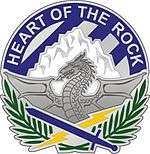 3rd Sustainment Brigade
3rd Sustainment Brigade
"Heart of the Rock"
 10th Sustainment Brigade
10th Sustainment Brigade
"Supporting the Climb" 15th Sustainment Brigade
15th Sustainment Brigade
"Wagonmaster Brigade"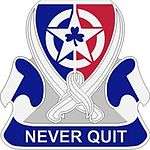 38th Sustainment Brigade
38th Sustainment Brigade
"Never Quit"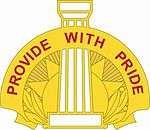 43rd Sustainment Brigade
43rd Sustainment Brigade
"Rough Riders"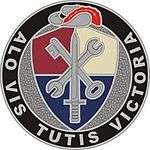 55th Sustainment Brigade
55th Sustainment Brigade
"Sustain the Force, Secure the Victory" 82nd Sustainment Brigade
82nd Sustainment Brigade
"Supporting Freedom" 89th Sustainment Brigade
89th Sustainment Brigade
"Above the Rest" 113th Sustainment Brigade
113th Sustainment Brigade
"First Line"
 2nd Brigade Support Battalion
2nd Brigade Support Battalion
"Mobile Sum"
(We Move) 13th Combat Sustainment Support Battalion
13th Combat Sustainment Support Battalion
"Find a Way"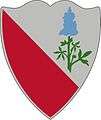 15th Brigade Support Battalion
15th Brigade Support Battalion
"Gamblers"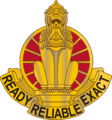 17th Combat Sustainment Support Battalion
17th Combat Sustainment Support Battalion
"Ready Reliable Exact"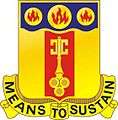 35th Combat Sustainment Support Battalion
35th Combat Sustainment Support Battalion
"Means to Sustain" 39th Brigade Support Battalion
39th Brigade Support Battalion
"Support Spirit Success"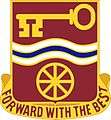 40th Brigade Support Battalion
40th Brigade Support Battalion
"Forward with the Best" 55th Support Battalion
55th Support Battalion
"Complete Support" 64th Brigade Support Battalion
64th Brigade Support Battalion
"Life Blood of the Army"- 68th Combat Sustainment Support Battalion
"Wheels of Distinction"  70th Brigade Support Battalion
70th Brigade Support Battalion
"Vis per Sustentationem" 72nd Brigade Support Battalion
72nd Brigade Support Battalion
"Security and Reliability" 87th Combat Sustainment Support Battalion
87th Combat Sustainment Support Battalion
"Base of the Pyramid" 88th Brigade Support Battalion
88th Brigade Support Battalion
"Give Way" 90th Aviation Support Battalion
90th Aviation Support Battalion
"Deliver" 100th Brigade Support Battalion
100th Brigade Support Battalion
"We will support"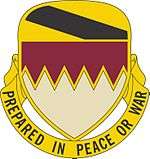 115th Brigade Support Battalion
115th Brigade Support Battalion
"Prepared in Peace and War"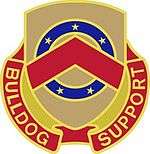 125th Brigade Support Battalion
125th Brigade Support Battalion
"Bulldog Support" 142nd Combat Sustainment Support Battalion
142nd Combat Sustainment Support Battalion
"Support for Strength"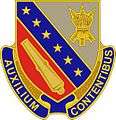 147th Brigade Support Battalion
147th Brigade Support Battalion
"Auxilium Contentibus"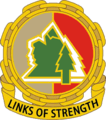 167th Combat Sustainment Support Battalion
167th Combat Sustainment Support Battalion
"Links of Strength" 168th Support Battalion
168th Support Battalion
"Pursuit of Excellence"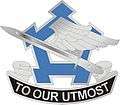 173rd Brigade Support Battalion
173rd Brigade Support Battalion
"To Our Utmost"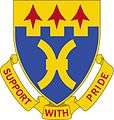 187th Forward Support Battalion
187th Forward Support Battalion
"Support with Pride" 188th Brigade Support Battalion
188th Brigade Support Battalion 193rd Combat Sustainment Support Battalion
193rd Combat Sustainment Support Battalion
"Strength in Diversity"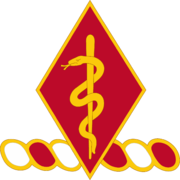 204th Brigade Support Battalion
204th Brigade Support Battalion
"Rough Riders" 225th Brigade Support Battalion
225th Brigade Support Battalion
"Warrior Support" 230th Brigade Support Battalion
230th Brigade Support Battalion
"In Support of Hickory"- 264th Support Battalion (Combat Sustainment)
"Support for Victory"  296th Brigade Support Battalion
296th Brigade Support Battalion
"Frontline Support"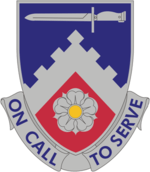 299th Brigade Support Battalion
299th Brigade Support Battalion
"On Call to Serve" 308th Brigade Support Battalion
308th Brigade Support Battalion
"Pride in Performance"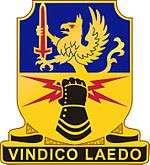 348th Support Battalion
348th Support Battalion
"Vindico Laedo" 412th Aviation Support Battalion
412th Aviation Support Battalion
"Professionals"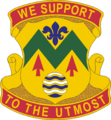 528th Brigade Support Battalion
528th Brigade Support Battalion
"We Support to the Utmost"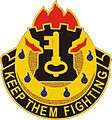 563rd Aviation Support Battalion
563rd Aviation Support Battalion
"Keep Them Fighting" 589th Brigade Support Battalion
589th Brigade Support Battalion
"First with Service" 640th Support Battalion
640th Support Battalion
"Forward and Above"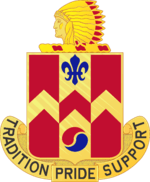 700th Brigade Support Battalion
700th Brigade Support Battalion
"Tradition Pride Support"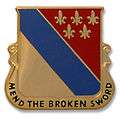 702nd Main Support Battalion
702nd Main Support Battalion
"Mend the Broken Sword"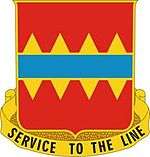 725th Brigade Support Battalion
725th Brigade Support Battalion
"Service to the Line" 834th Aviation Support Battalion
834th Aviation Support Battalion
"Winged Warriors Support" 927th Combat Service Support Battalion
927th Combat Service Support Battalion
"We Support the Force"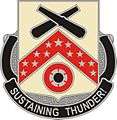 3643rd Brigade Support Battalion
3643rd Brigade Support Battalion
"Sustaining Thunder"
Transportation
 Transportation Corps Regimental DUI
Transportation Corps Regimental DUI
"Spearhead of Logistics"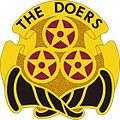 6th Transportation Battalion
6th Transportation Battalion
"The Doers"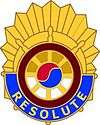 7th Transportation Brigade
7th Transportation Brigade
"Resolute" 10th Transportation Battalion
10th Transportation Battalion
"Portal to Victory"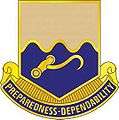 11th Transportation Battalion
11th Transportation Battalion
"Preparedness and Dependability" 57th Transportation Battalion
57th Transportation Battalion
"Providing with Mobility"
See also
- Shoulder sleeve insignia – which describes the unit formation patches worn on the upper left and right sleeves below the shoulder hem.
References
- ↑ Arthur DuBois, Heraldic Branch O.Q.M.G., The Quartermaster Review – September–October 1954. Found at US Army Quartermaster Foundation website.
- ↑ Guide to the Wear and Appearance of Army Uniforms and Insignia (PDF). U.S. Army. 2 December 2014. Department of the Army Pamphlet 670-1.
- ↑ http://www.apd.army.mil/pdffiles/p670_1.pdf DA PAM 670-1 dated 1 JUL 2015
- ↑ "FAQs ~ Organizational Insignia". The Institute of Heraldry, U.S. Army.
- ↑ Sawicki, James A. Infantry Regiments of the U.S. Army. Wyvern Publications, 1981. ISBN 0-9602404-3-8.
- ↑ "Walter Reed National Military Medical Center, US Army Element". Institute of Heraldry. Office of the Administrative Assistant to the Secretary of the Army. 18 July 2011. Retrieved 19 May 2013.
Further reading
"Wear and Appearance of Army Uniforms and Insignia" (PDF). Army Publishing Directorate. United States Army. 15 September 2014.
- The Institute of Heraldry, Heraldic Services Handbook, 1997
- Heralding Devices, Soldiers Magazine, January 1985
External links
- Official web site – The Institute of Heraldry
- U.S. Army Quartermaster Foundation – U. S. Army Heraldry